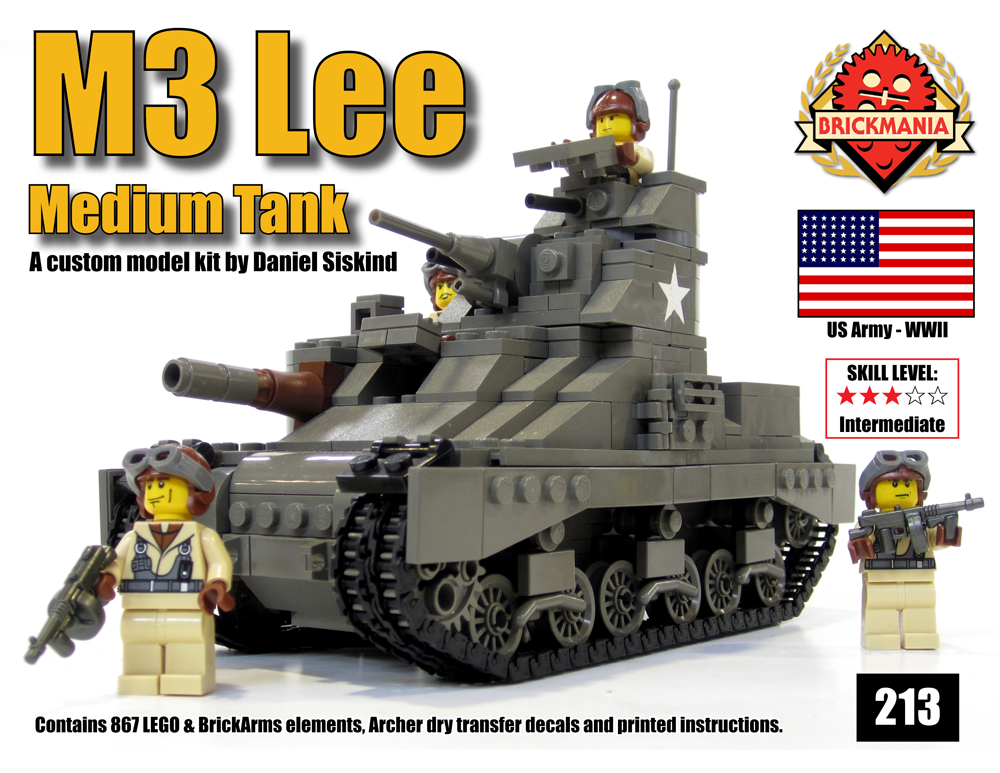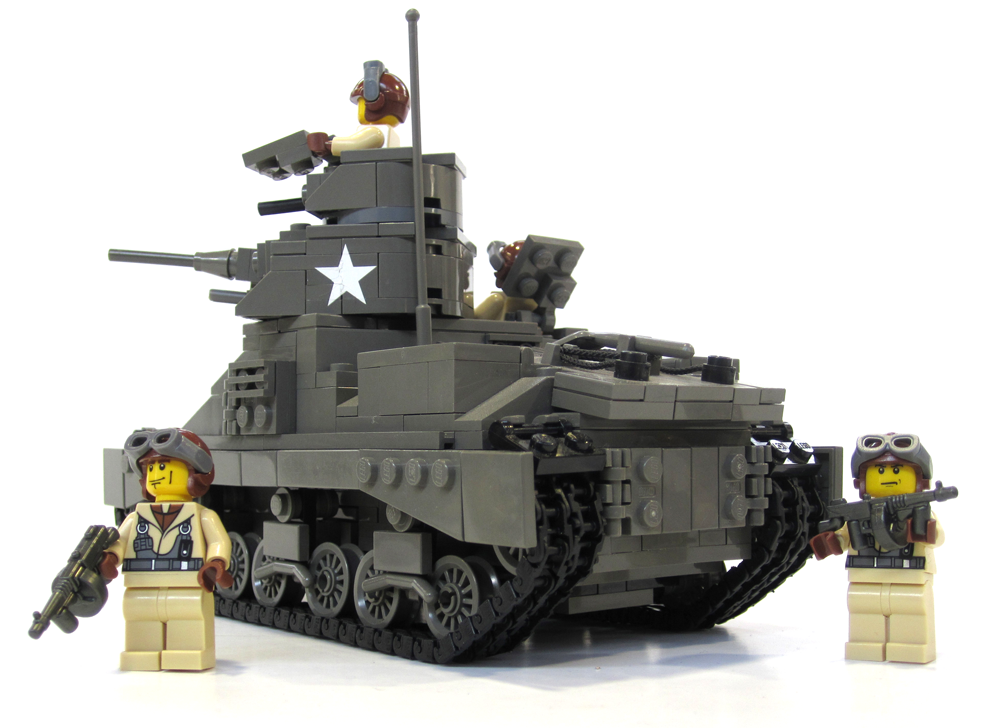At the outbreak of World War Two, the US Army's tank force was woefully unequipped to handle the latest European tank developments. The existing American tanks (M1 and M2) were inadequately armed and armored compared to the German panzer forces that had swept across Europe in the early months of the war. Facing the very real possibility of being swept into a European conflict and under pressure to supply material to the beleaguered British army, an urgent call for a more powerful tank was issued.
American industry heeded the call and began work on tough new tank design with heavier armor and a 75 mm main gun. This new tank would eventually be known as the M4 Sherman Medium Tank, a complex and powerful tank that would take years to design and produce. In the meantime the M3 Medium tank was rushed into production, mounting a 75mm main gun in an antiquated hull-mounted sponsoon. The M3 also 37mm high-velocity anti-tank gun in a turret mouted offset to the left top of the bulky hull. There was an additonal commander's cupola with a 30 cal. machine gun mounted on top of the 37mm gun turrent (giving a turret on turret effect).
After finding their own tanks to be innfective and available in too small of numbers against the Germans, the British army order the M3 from the United States in great numbers through the Lend-Lease program. While the British bought large numbers of the original M3 design, they also ordered large numbers with a specially designed turret, which had an large compartment at the rear to house a radio and eliminated the commander's cupola. Other British-specified modifications included replacing the orignal gasoline-powered engine with a less flammable power plant made up of twin diesel engines. The British dubbed the original the original M3 the "Lee" and the modified version was called the "Grant."
Both variants of the M3 played a pivitol role in the North African campaigns. While mounting of the 75mm gun low in the hull and the over-all high sillhouette of the tank had many disadvantages, the M3 proved itself effective and reliable on the battlefield. For a brief time the M3's 75mm gun dominated battlefields verses the German Panzer III and Panzer IV tanks. Field Marshall Bernard Montgomery concluded his successful route of the German and Italian armies in North Africa while riding in a M3 Grant (it is preserverd today in London's Imperial War Museum)
Unfortunatly the M3's battlefield dominance proved short lived as the Germans up-gunned their own tanks and came out with the more powerful Tiger and Panther tanks. By 1943 the M3 was declared obsolete and was phased out of service in the European theater as the M4 Sherman became available in large numbers. The M3 continued service the Pacific theatre until the end of World War Two, where it proved effective against infantry and the diminutive Japanese tank forces. Although the design was greatly flawed and out of date, the M3 proved to be a satisfactory interim solution for American and British needs, with more than 6000 being produced between August 1941 and December 1942. Many surplus M3 hulls were converted to the M7 Priest 105mm self-propelled howitzers and M31 tank recovery vehcile.
Additional information about this Brickmania custom Lego® kit:
Highlights of this kit include six opening hatches, hull interior details (driver and radio operator positions and engine compartment), five crewmen (equipped with BrickArms weapons-updated from those on the box cover) fully articulated vehicle tracks, fully posable turrets and main gun. The model is mainly made from the old dark gray bricks (out of production since 2004) and the rarity of these pieces make this one of the most expensive AFV kits we have ever offered. This is a limited re-release of rarest Brickmania kits ever made: Only five of the original kits were sold and only five more are available now. Due to the extreme difficulty of locating parts for this kit, it is highly unlikely that this kit will ever be offered again.
This kit comes disassembled and includes completed printed building instructions, a signed certificate of authenticity, and is packaged in a sealed box.
Star ensignia decals from Archer Dry Transfers are included.











